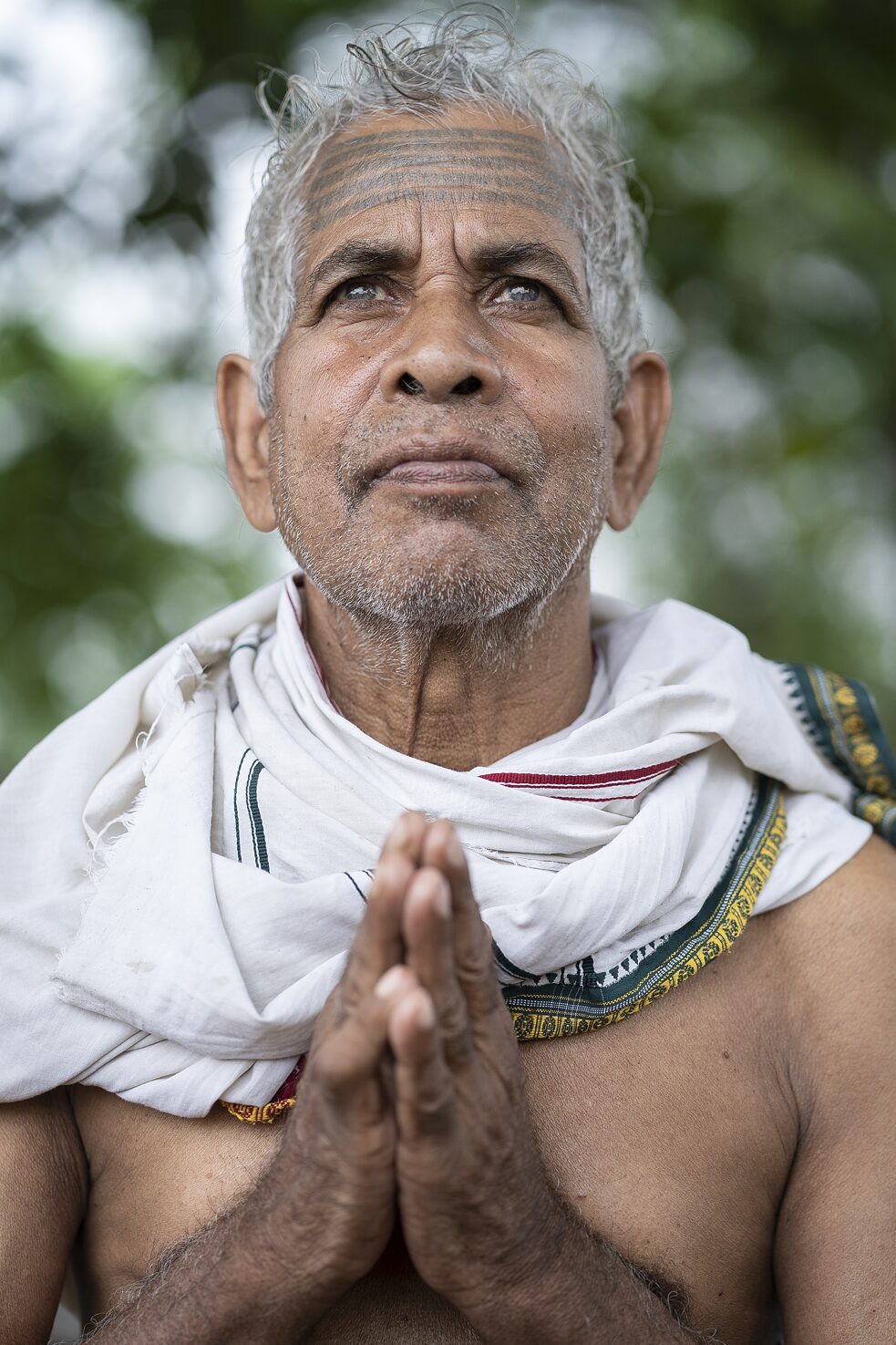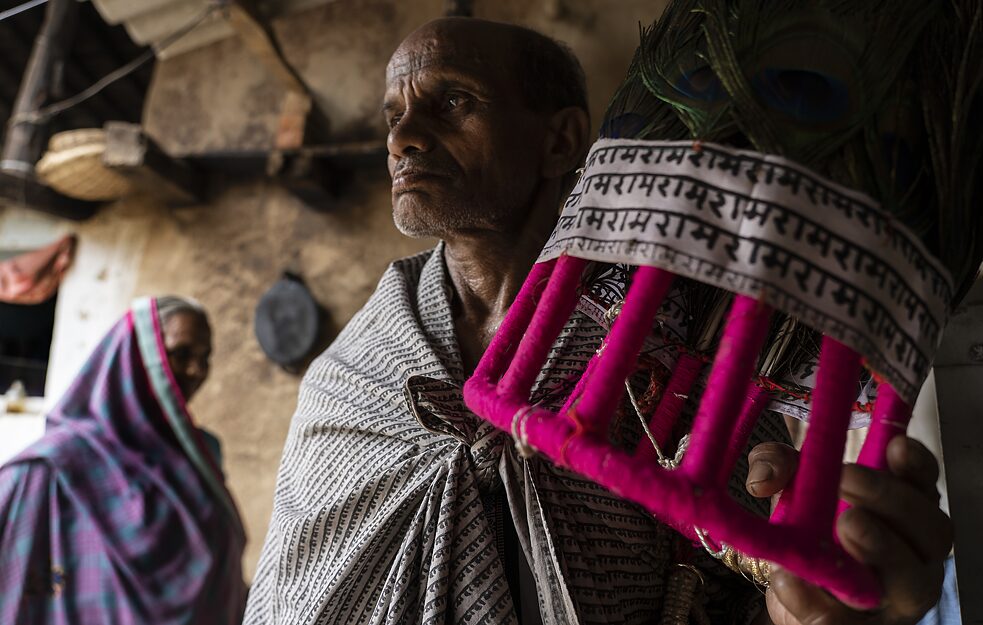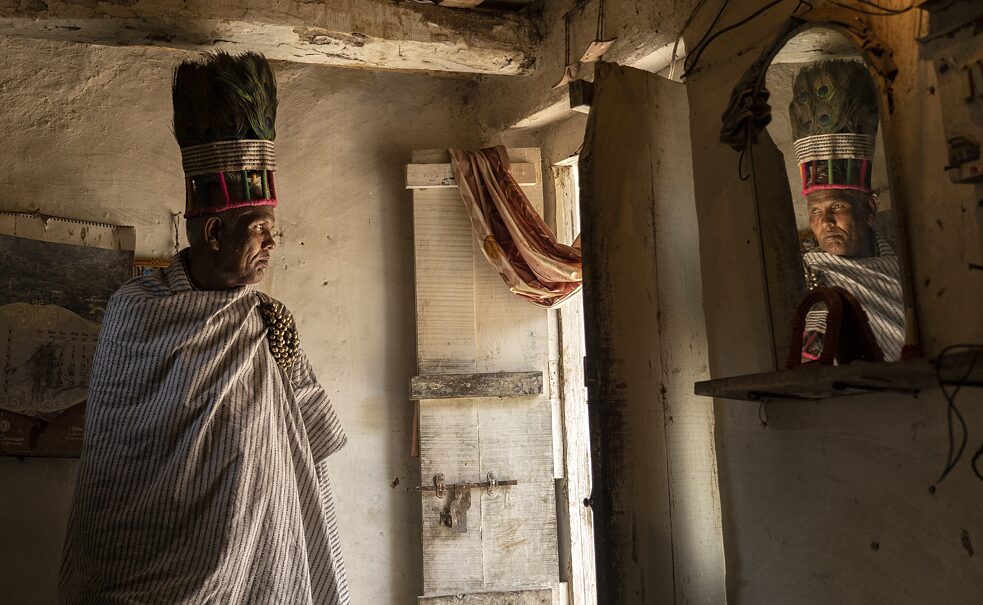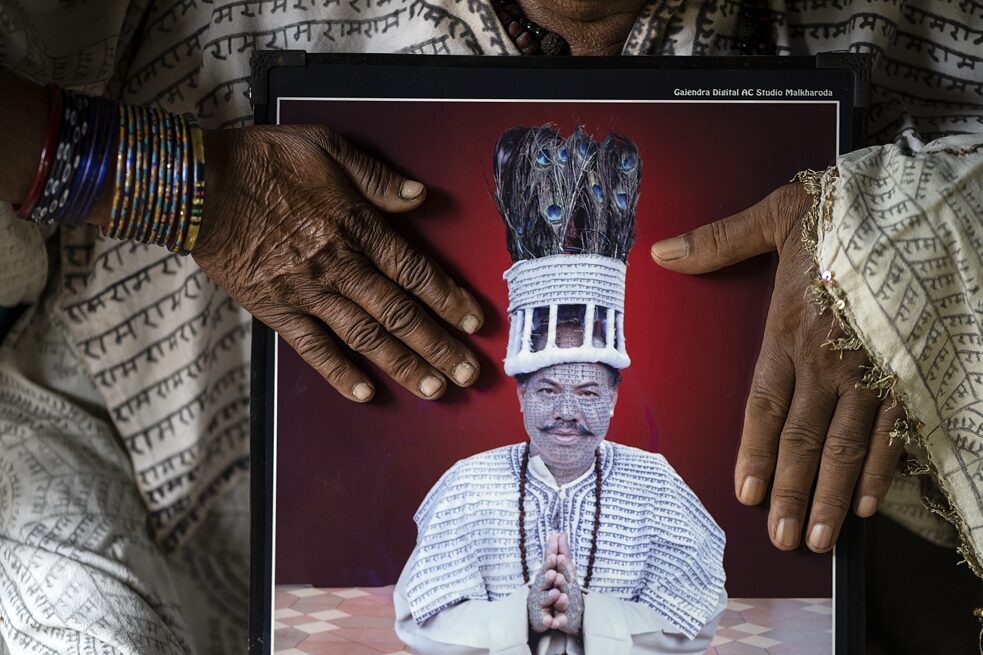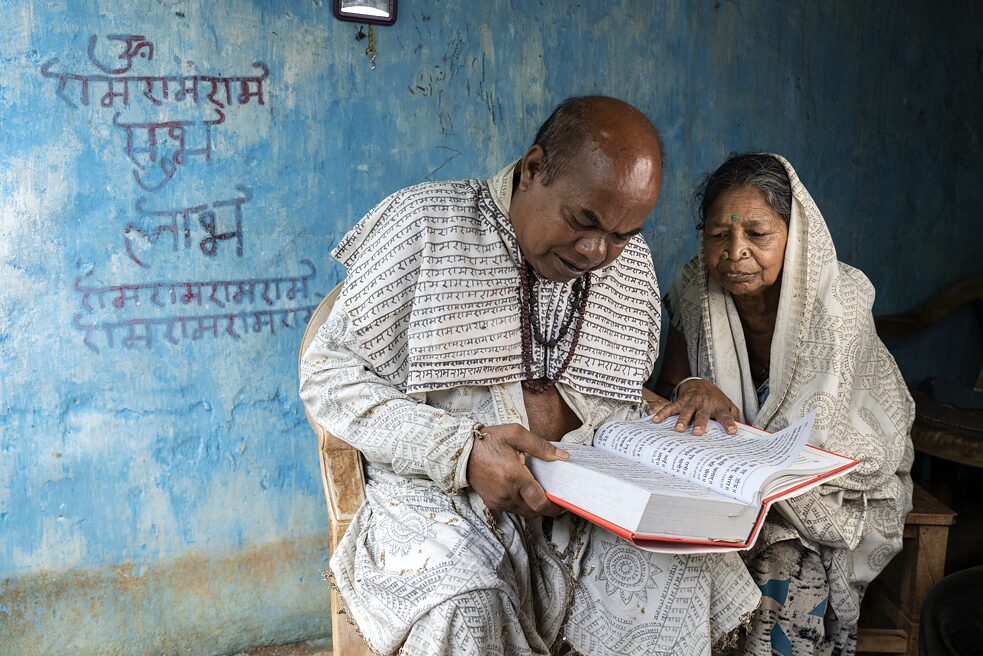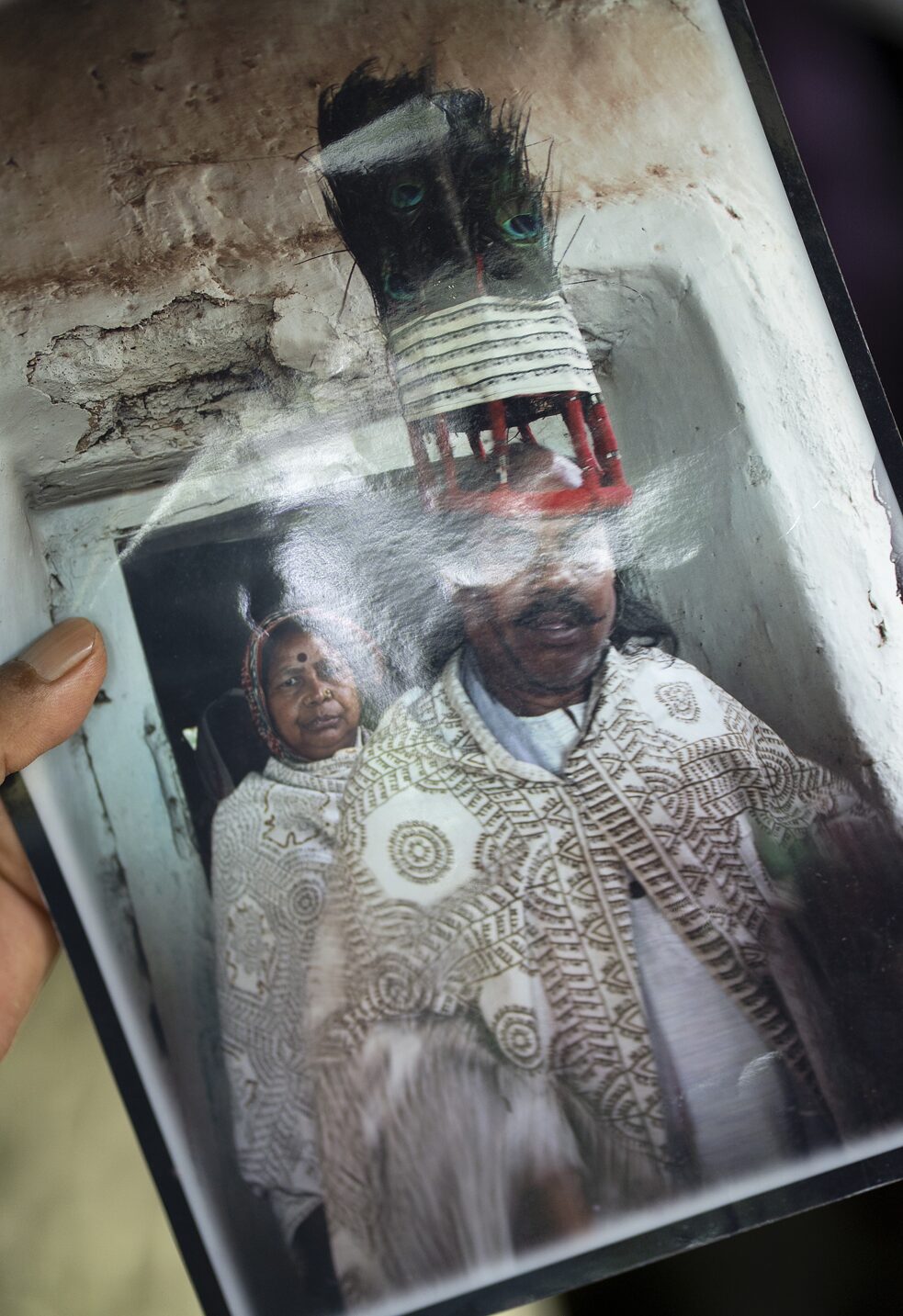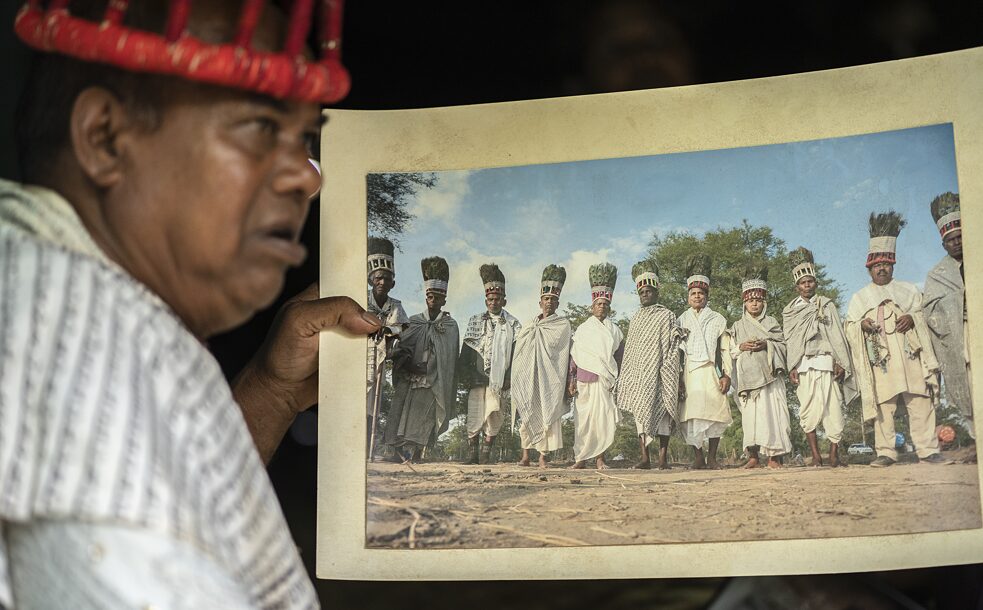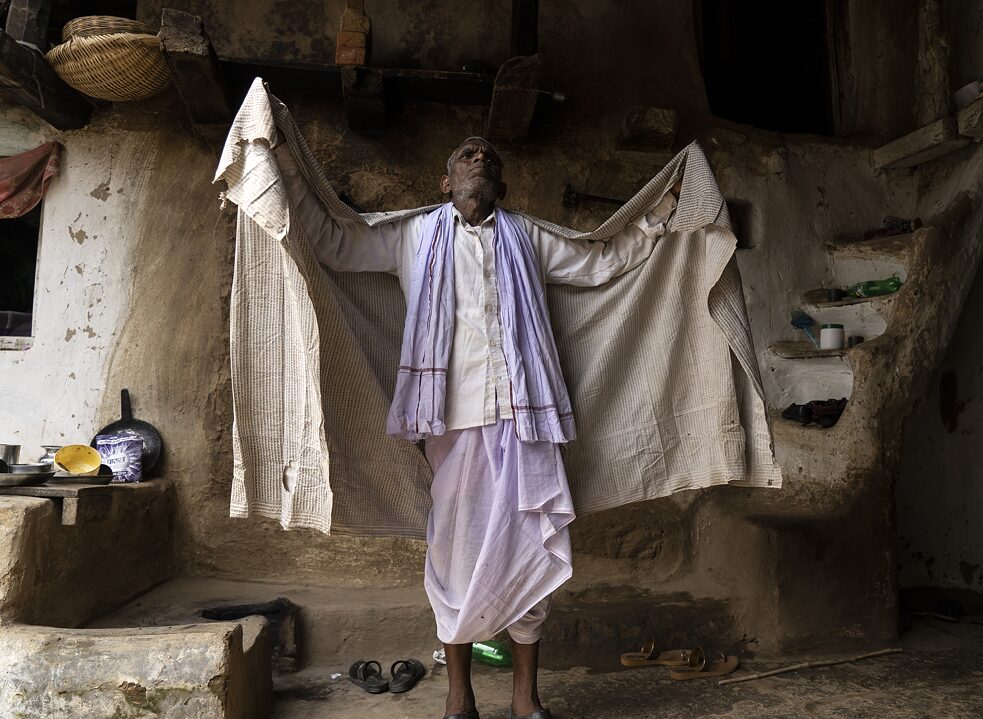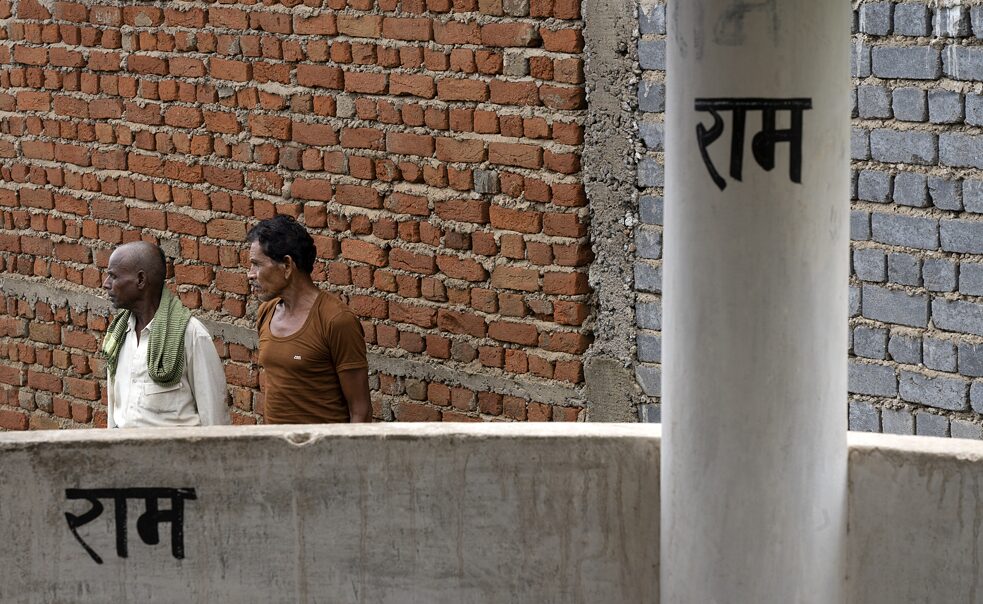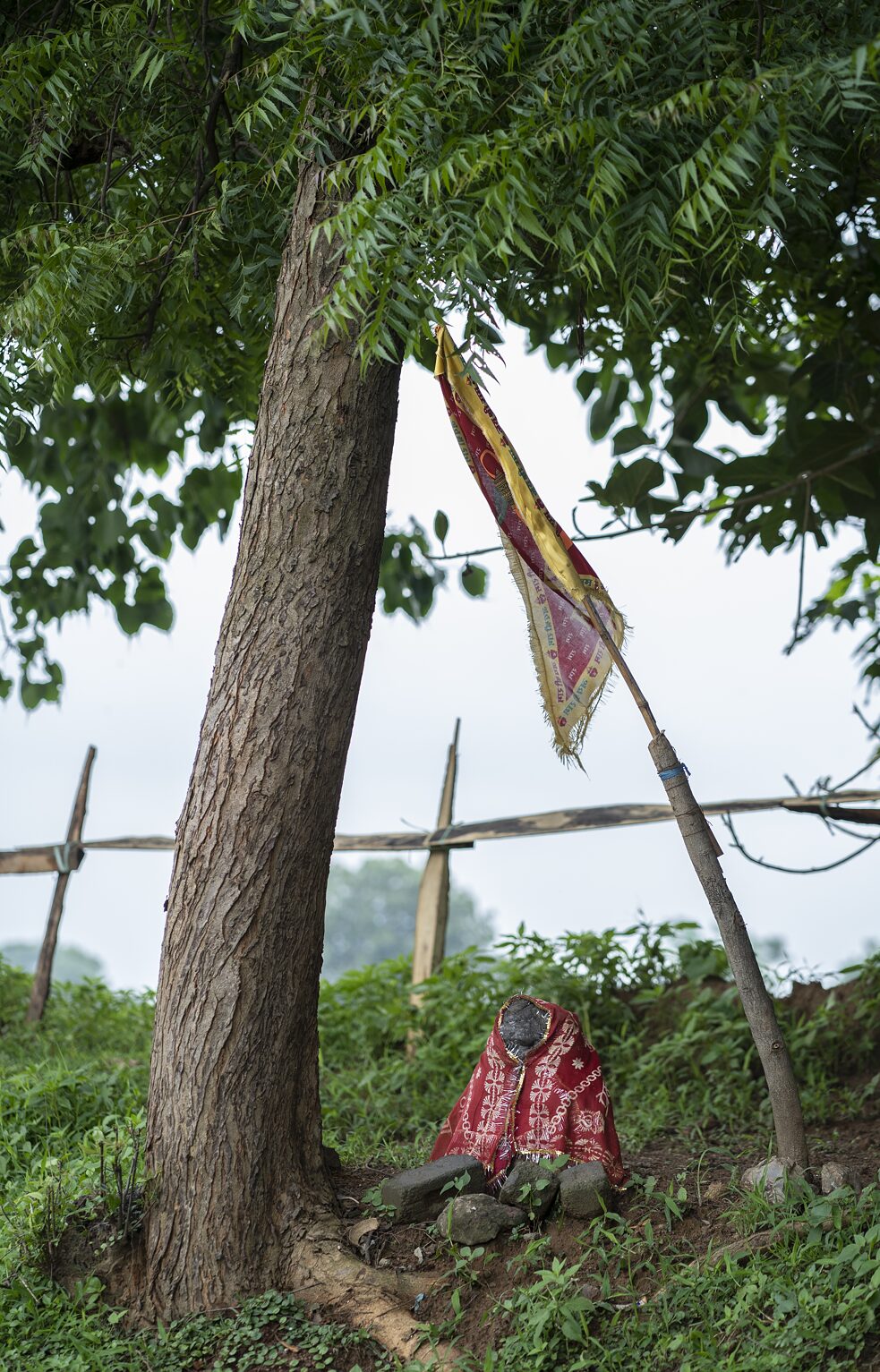Pubarun Basu | Fotoserie
In the Name of God
Die Fotoserie schildert den Weg der Ramnamis, eines Stammes der unteren Kaste in Indien, zur Freiheit und die permanente Tätowierung von „Ram“ als Akt des Widerstands gegen das Kastenregime.
ÜBER DIE SERIE
Die Ramnami-Sekte ist seit der Mogulzeit mit einer Geschichte systematischer Unterdrückung belastet. Als Angehörige der unteren Kaste wurde den Stammesangehörigen jahrhundertelang der Zutritt zu Tempeln verwehrt und sie wurden als Unberührbare behandelt. Nach einer Reihe von Ereignissen, die ihnen die Freiheit der Religionsausübung nahmen, wurde der Stamm an die Grenzen der sozio-politischen Tyrannei gedrängt. Die indigene Identität dieser ethnischen Gruppe wurde ihnen von den Gemeinschaften der oberen Kaste genommen. Im späten 19. Jahrhundert wurde ein Held namens Parasuram geboren, der sich aus der Asche der Meuterei erhob und die Ramnami-Sekte gründete, um dem Kastenregime zu trotzen. Der Name "Ram" wurde auf die nackte Haut aller Mitglieder des Stammes tätowiert, um eine stille, aber kraftvolle Botschaft zu vermitteln, dass Gott allgegenwärtig ist.
Auch ihre weißen Gewänder waren mit dem Namen Ram verziert, während die Pfauenfedern auf ihren Kopfbedeckungen eine reiche mythologische Bedeutung hatten. Obwohl das Stigma, das den Stämmen der unteren Kaste anhaftet, immer noch auf den Menschen lastet, hat die Reise der Ramnamis in die Freiheit einen friedlichen Abschluss gefunden. Infolgedessen hält es die jüngere Generation nicht mehr für nötig, den Bräuchen zu folgen, die einst von den Älteren institutionalisiert wurden. Die Tätowierungen sind mit der Zeit verblasst, ebenso wie ihre Bedeutung. Dennoch bleiben sie auf der Haut als ständige Erinnerung an den Unabhängigkeitskampf der Ramnamis eingebrannt.
Die Ramnamis führen heute ein bescheidenes Leben in den Dörfern von Janjgir-Champa in Chhattisgarh, verborgen vor den Blicken der modernen Welt. Während die Landwirtschaft nach wie vor ihre Haupteinnahmequelle ist, haben sich die Söhne und Töchter der Ramnamis auf der Suche nach Arbeitsplätzen in verschiedenen Sektoren in die Städte begeben. Die Sekte hat sich in einzelne Gemeinschaften aufgeteilt, die über den ganzen Bezirk verstreut sind. Dennoch kommen sie jedes Jahr zusammen, um ihre Geschichte mit einem Bhajan-Festival zu feiern. In den Versammlungssälen, in denen einst die Rebellion Gestalt annahm, leben heute junge Studenten, die eine bessere Zukunft anstreben. Der Name Ram ist in jedem Winkel der Dörfer zu finden. Die Ramnamis, die meisten von ihnen in ihren 70ern, sind nur noch ein flüchtiger Anblick auf dem indischen Festland.
